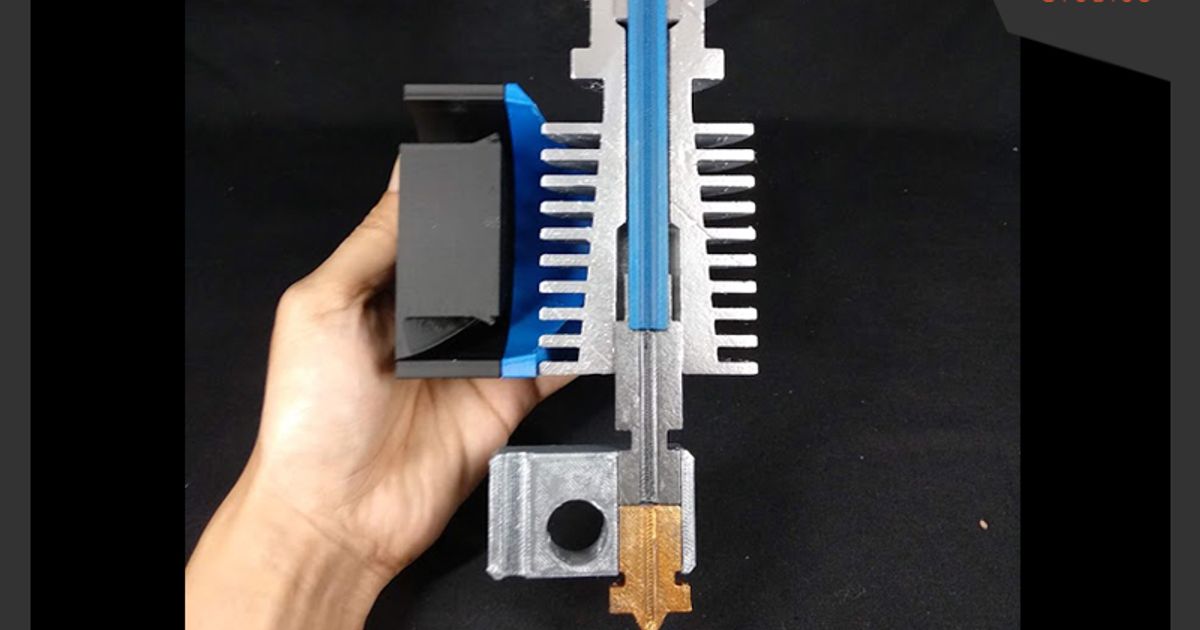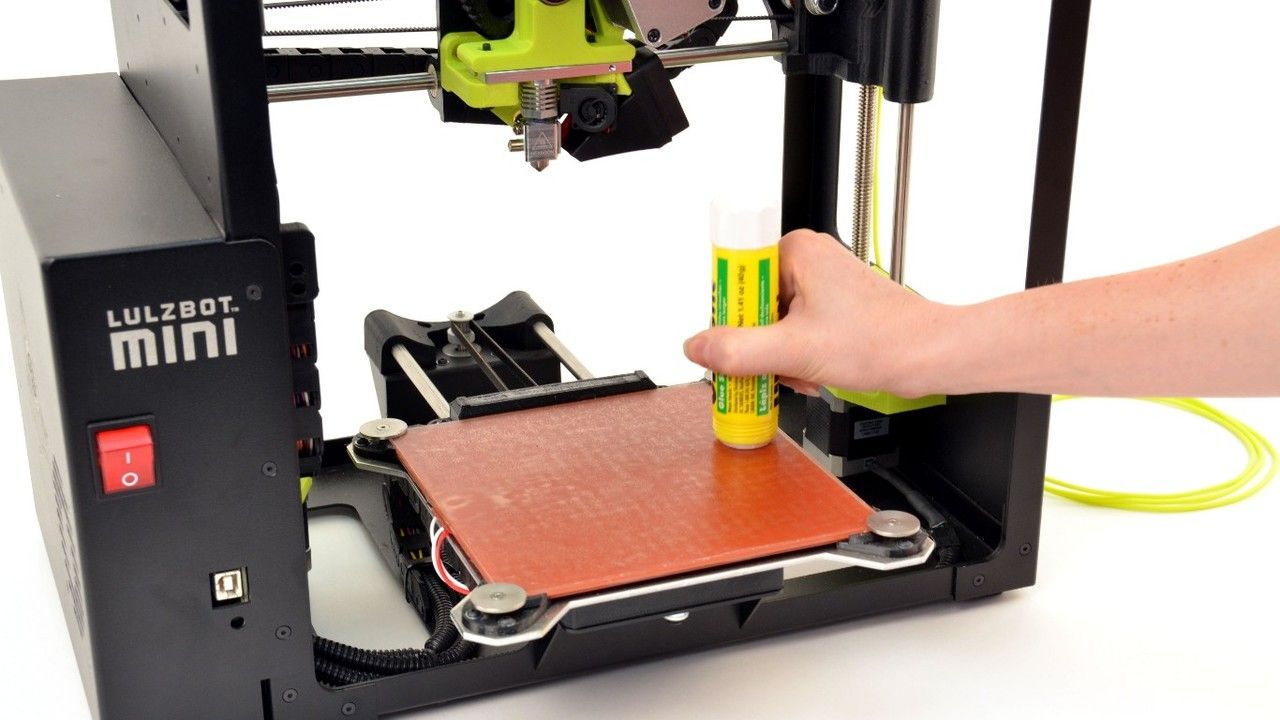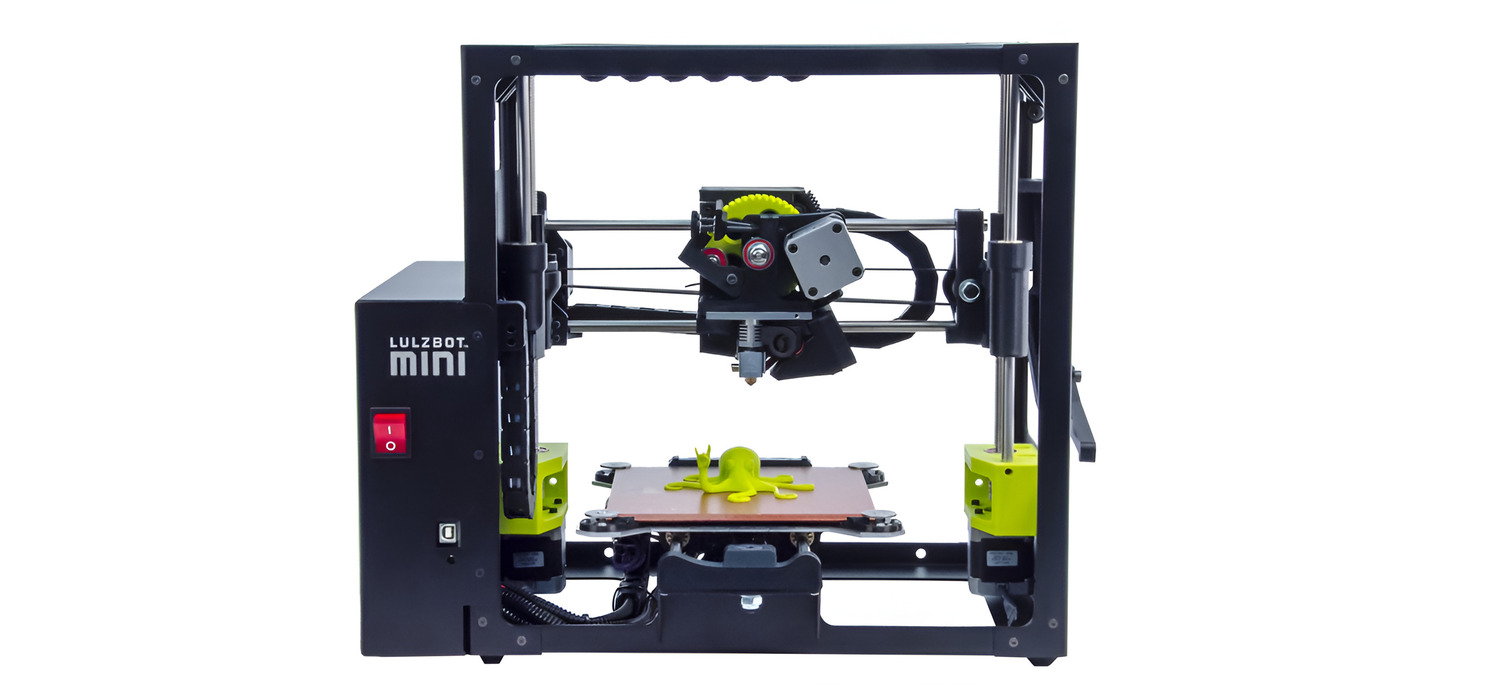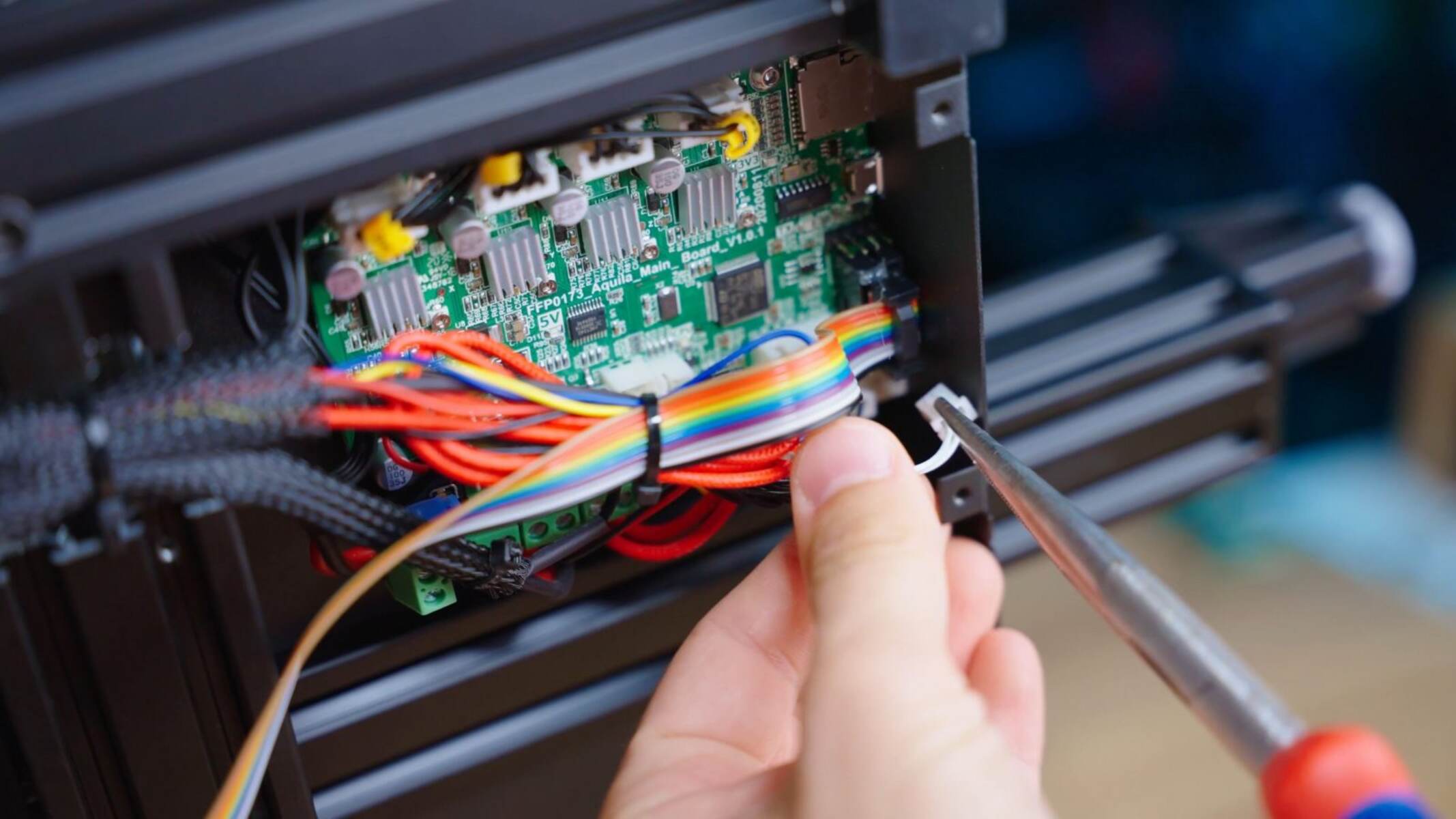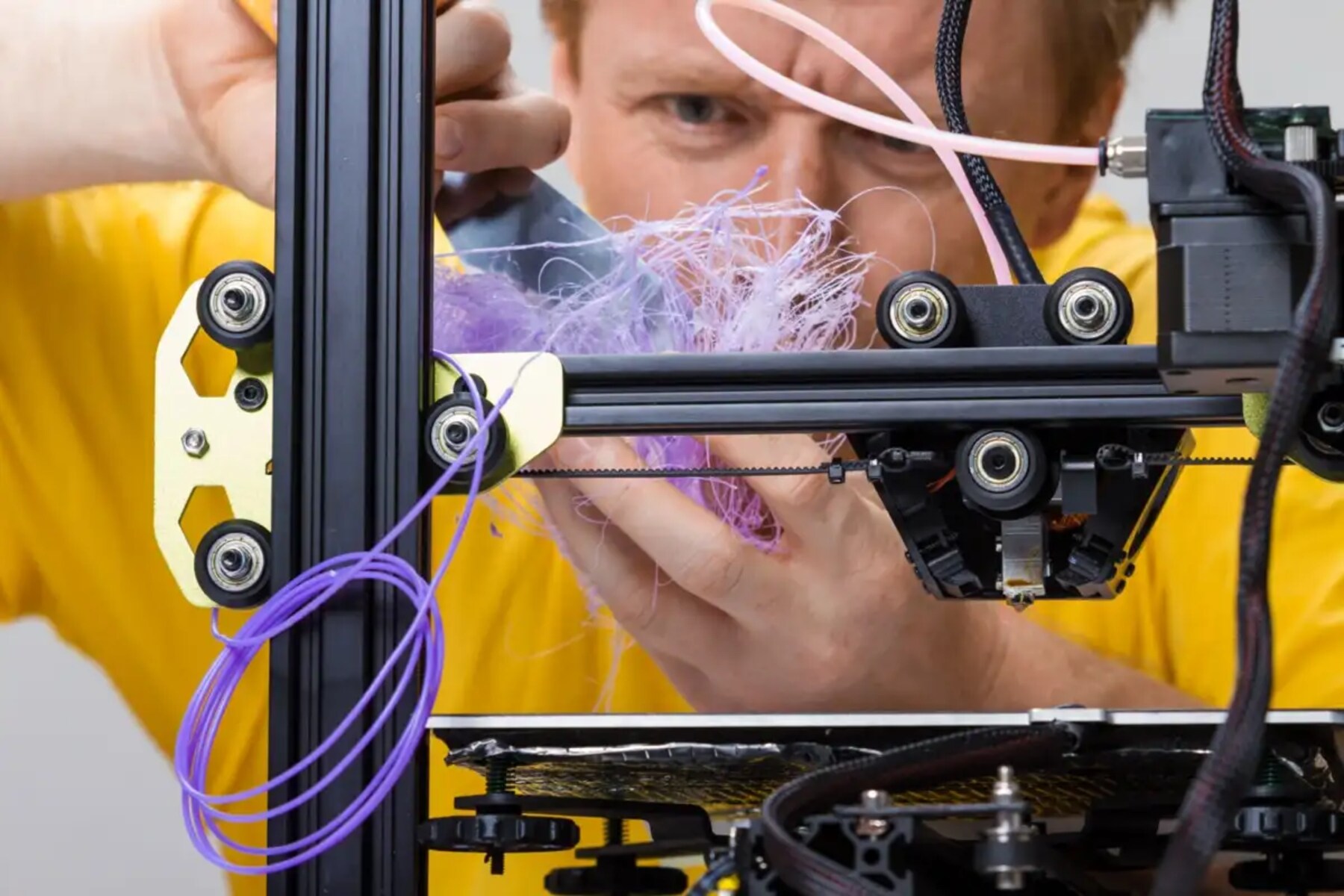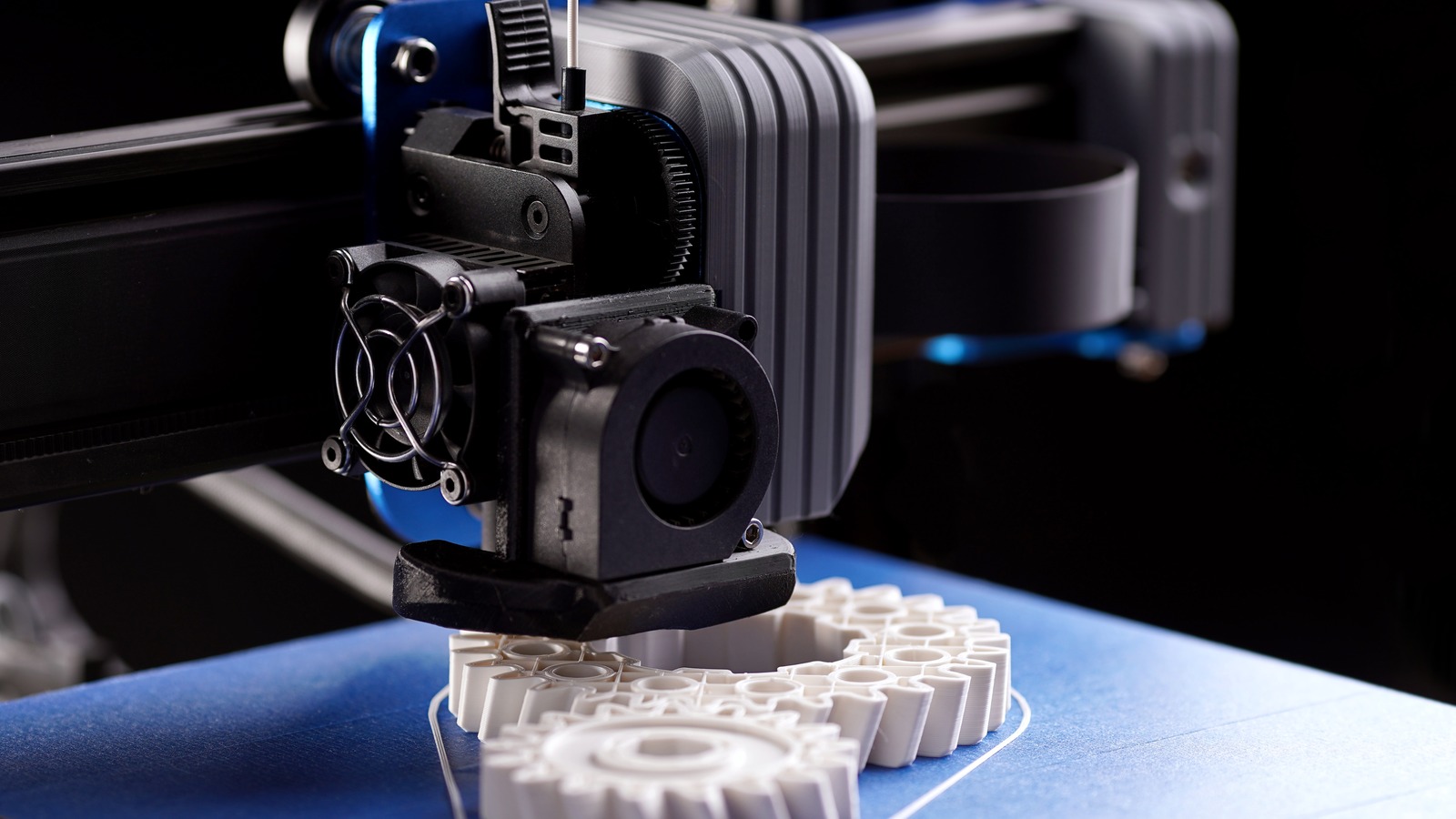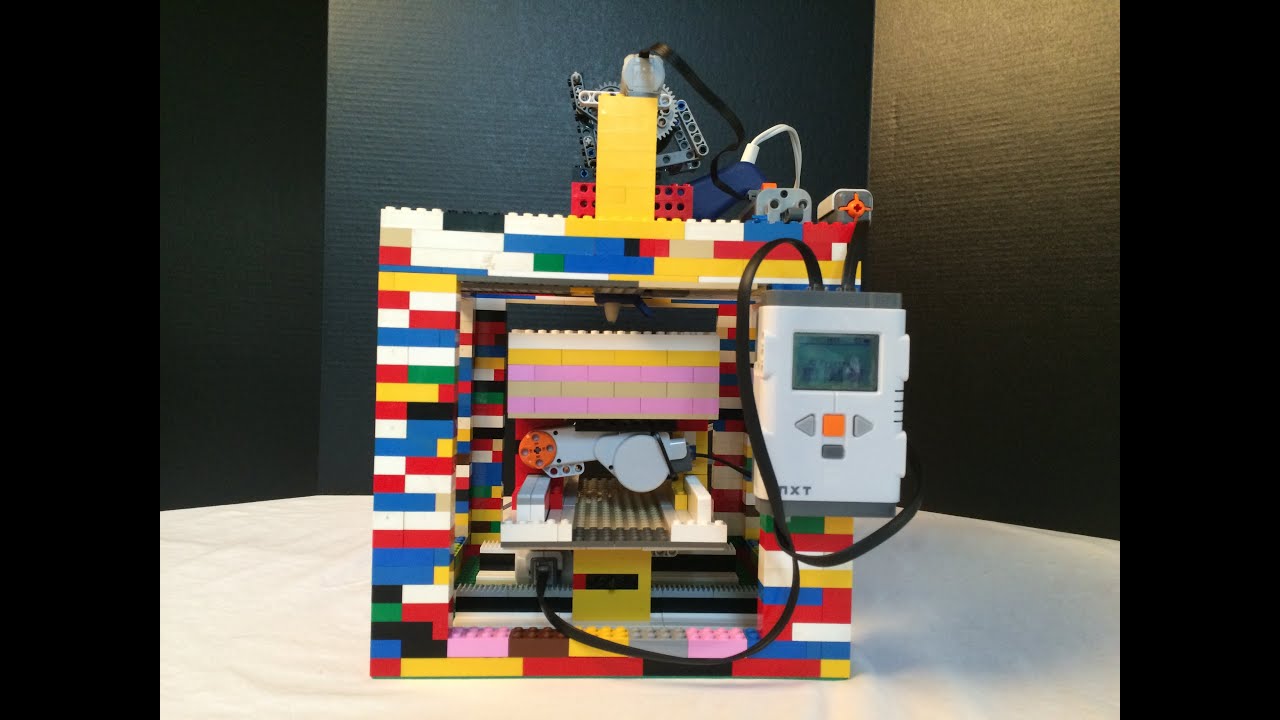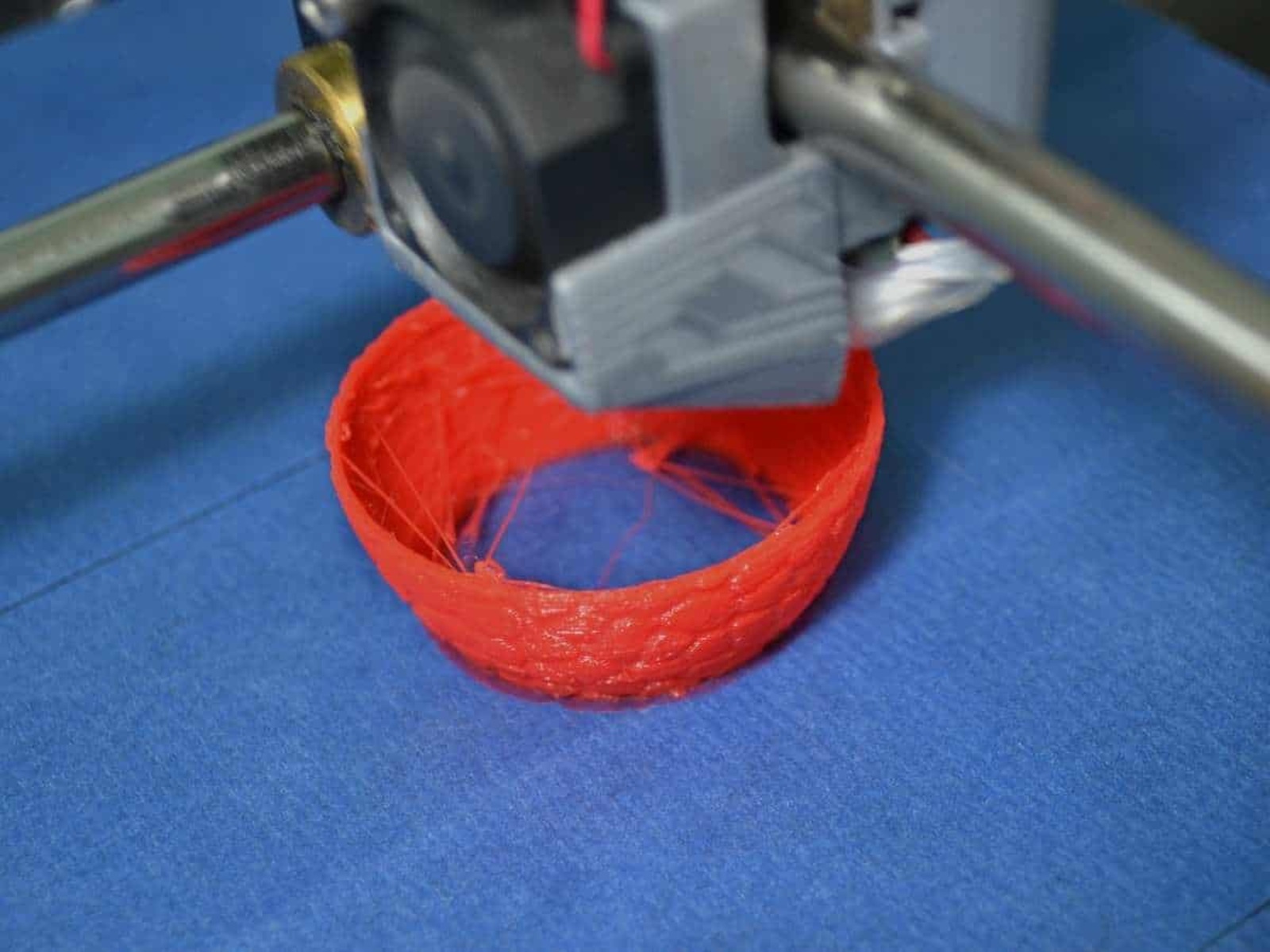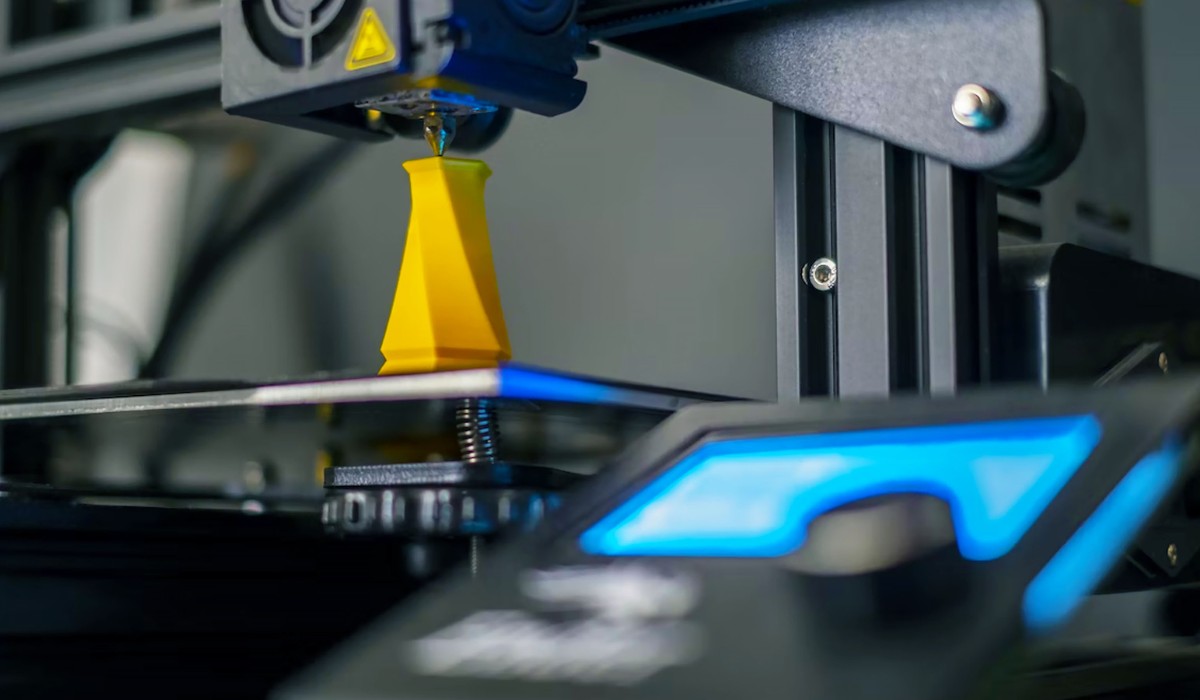Introduction
A 3D printer is a fascinating device that has revolutionized various industries, allowing for the creation of complex three-dimensional objects. However, have you ever wondered just how hot these printers get during the printing process? In this article, we will delve into the temperature aspects of a 3D printer, including hotend temperature, bed temperature, filament temperature, and more.
One of the key factors in the successful operation of a 3D printer is maintaining precise control over temperature. Different components of the printer require specific temperatures to achieve optimal performance and ensure high-quality prints. Understanding these temperature ranges is crucial for achieving successful results with your 3D printing projects.
The hotend temperature refers to the temperature at which the printer’s extruder nozzle operates. The extruder nozzle is responsible for melting the filament and depositing it layer by layer to create the desired object. The hotend temperature typically ranges from 180°C to 300°C, depending on the type of filament being used. Higher temperatures are required for printing materials such as ABS, while lower temperatures are suitable for PLA.
The Temperature of a 3D Printer
When it comes to 3D printing, temperature is a crucial aspect of the printing process. Different components of a 3D printer require specific temperatures to function properly and achieve the desired outcome. Understanding the temperature aspects of a 3D printer is essential for achieving high-quality prints.
The temperature of a 3D printer can be divided into three main categories: hotend temperature, bed temperature, and filament temperature. Let’s take a closer look at each of these.
The hotend temperature refers to the temperature at which the extruder nozzle of the printer operates. The extruder nozzle is responsible for melting the filament and depositing it layer by layer to create the object. The hotend temperature typically ranges from 180°C to 300°C, depending on the type of filament used. Different materials have different melting points, so it’s crucial to set the hotend temperature correctly to ensure proper extrusion.
The bed temperature, also known as the build plate temperature, refers to the temperature of the platform on which the object is printed. Maintaining the correct bed temperature is important for ensuring proper adhesion of the print to the platform. Most 3D printers use heated beds to keep the temperature steady, especially when printing with materials like ABS, which tend to warp if not properly heated. The bed temperature usually ranges from 50°C to 110°C, depending on the filament being used.
The filament temperature, on the other hand, refers to the temperature at which the filament itself needs to be heated. Filaments like PLA and ABS have specific temperature ranges at which they melt and flow properly. PLA, for example, generally requires a temperature of around 180°C to 220°C, while ABS usually ranges from 230°C to 260°C. It’s important to set the filament temperature accurately to ensure smooth and consistent extrusion throughout the printing process.
Understanding the temperature requirements of a 3D printer is crucial for achieving successful prints. Proper temperature control ensures the correct melting, flow, adhesion, and layer bonding of the filament, resulting in high-quality and accurate prints. In the next section, we will explore the differences between PLA and ABS filaments and their temperature requirements.
Hotend Temperature
The hotend temperature plays a vital role in the 3D printing process. It refers to the temperature at which the extruder nozzle, also known as the hotend, operates. The extruder nozzle is responsible for melting the filament and depositing it layer by layer to create the final object.
The hotend temperature varies depending on the type of filament being used. Different materials have different melting points, and thus require specific temperature settings to achieve optimal performance. For example, PLA filament typically requires a hotend temperature ranging from 180°C to 220°C, while ABS filament requires a higher temperature range of 230°C to 260°C.
Setting the hotend temperature correctly is crucial to ensure proper extrusion and smooth filament flow. If the temperature is too low, the filament may not melt adequately, leading to inconsistent layer deposition and weak adhesion between layers. On the other hand, if the temperature is too high, the filament may overheat, leading to stringing, oozing, and poor print quality.
It’s worth noting that some modern 3D printers come equipped with advanced features such as temperature sensors and automatic temperature control. These features help maintain a stable and consistent hotend temperature throughout the printing process, ensuring precise results.
When using a 3D printer, it’s essential to monitor the hotend temperature closely and make adjustments if necessary. Factors such as filament composition, print speed, and ambient temperature can affect the desired hotend temperature. It’s recommended to start with the manufacturer’s recommended temperature settings for the specific filament being used and make slight adjustments as needed based on the results.
Overall, understanding and properly controlling the hotend temperature is key to achieving successful 3D prints. The correct temperature ensures proper melting and flow of the filament, leading to accurate and high-quality objects. In the next section, we will discuss the bed temperature and its significance in the 3D printing process.
Bed Temperature
The bed temperature is a crucial aspect of the 3D printing process that often gets overlooked. It refers to the temperature of the build plate, also known as the print bed, on which the object is printed. Maintaining the correct bed temperature is important for ensuring proper adhesion of the print to the platform and minimizing the risk of warping.
Most modern 3D printers come with a heated bed that allows precise control over the temperature. The bed temperature usually ranges from 50°C to 110°C, depending on the type of filament being used. Materials such as ABS generally require a higher bed temperature to prevent warping, as ABS has a tendency to shrink as it cools down. On the other hand, materials like PLA generally have lower bed temperature requirements.
Having the correct bed temperature is crucial to achieve a successful print. If the bed temperature is too low, the print may not adhere properly, leading to issues such as warping, curling, or detachment from the platform. On the other hand, if the bed temperature is too high, it can cause the print to overheat, leading to poor print quality and potential damage to the printer or the print itself.
Setting the bed temperature correctly is a matter of trial and error, as it may vary depending on different factors such as the ambient temperature and the specific characteristics of the filament being used. It’s recommended to start with the manufacturer’s suggested temperature settings for the filament and make adjustments as necessary based on the results of your prints.
One helpful technique for ensuring proper bed adhesion is to use additional tools such as a print surface or adhesives. These tools can help improve bed adhesion, especially for filament types that may have difficulty sticking to the print bed at lower temperatures.
Overall, maintaining the correct bed temperature is imperative for successful 3D prints. It ensures proper adhesion, minimizes warping, and promotes overall print quality. In the next section, we will explore the temperature requirements of different filament types, such as PLA and ABS, and dive deeper into their characteristics.
Filament Temperature
The filament temperature is a critical factor in 3D printing, as it determines the optimal temperature at which the filament needs to be heated for successful extrusion. Different filaments have different melting points and flow characteristics, requiring specific temperature ranges for optimal performance.
Two of the most commonly used filaments in 3D printing are PLA (Polylactic Acid) and ABS (Acrylonitrile Butadiene Styrene). PLA filament typically requires a temperature range of around 180°C to 220°C, while ABS filament usually requires a higher range of 230°C to 260°C.
Setting the filament temperature correctly is crucial to ensure smooth and consistent extrusion. If the temperature is too low, the filament may not melt properly, resulting in inconsistent flow and weak adhesion between layers. On the other hand, if the temperature is too high, the filament may become too runny, leading to issues such as stringing or oozing, and potentially affecting the overall print quality.
It’s important to note that different filament manufacturers and brands may have slightly different temperature recommendations. It’s advisable to refer to the manufacturer’s guidelines or documentation that come with the filament for the most accurate temperature settings.
In addition to PLA and ABS, there are various other filaments available in the market, each with its own unique temperature requirements. Some examples include PETG (Polyethylene Terephthalate Glycol), which typically requires a temperature range of 220°C to 250°C, and TPU (Thermoplastic Polyurethane), which typically requires a lower temperature range of 200°C to 230°C.
Experimenting with different filament temperatures can help achieve the desired print results. It’s recommended to start with the manufacturer’s recommended temperature settings and make slight adjustments based on the outcome of the prints. Factors such as print speed, layer height, and cooling settings may also influence the ideal filament temperature for specific prints.
Understanding the required filament temperature is essential for obtaining high-quality, accurate, and consistent 3D prints. Proper temperature control ensures the filament’s proper melting and flow characteristics, resulting in successful and impressive objects.
In the next section, we will discuss the differences between PLA and ABS filaments in more detail, including their characteristics and best use cases in 3D printing.
Understanding PLA and ABS Filaments
When it comes to 3D printing, PLA (Polylactic Acid) and ABS (Acrylonitrile Butadiene Styrene) are two of the most commonly used filaments. Understanding the characteristics and differences between these two filaments can help you choose the right material for your 3D printing projects.
PLA filament is renowned for its ease of use and environmental-friendliness. It is derived from natural sources such as cornstarch or sugarcane and is biodegradable. PLA is known for its vibrant colors and smooth surface finish, making it popular for various applications, including prototypes, artistic creations, and consumer products.
One of the distinguishing features of PLA filament is its lower melting point compared to other materials, making it easier to print with. PLA typically requires a lower hotend temperature ranging from 180°C to 220°C, depending on the specific brand and composition. It has minimal warping and a slightly sweet, pleasant smell when printing.
On the other hand, ABS filament is known for its durability and high-temperature resistance. It is a petroleum-based thermoplastic that offers excellent strength, making it suitable for functional parts, mechanical components, and industrial applications. ABS is more flexible and impact-resistant than PLA, but it is also more challenging to print with.
ABS filament typically requires a higher hotend temperature ranging from 230°C to 260°C. It has a higher glass transition temperature, allowing it to withstand higher temperatures without deforming. It also has a tendency to warp if not properly heated, making it important to use a heated print bed and ensure good bed adhesion when printing with ABS.
Both PLA and ABS have their advantages and disadvantages, and the choice between the two depends on the specific requirements of your 3D printing project. PLA is great for beginners or those looking for easy-to-use and environmentally-friendly filament with excellent printability. ABS, on the other hand, offers greater durability and temperature resistance but requires more precise temperature control for successful prints.
It’s important to note that there are many other filaments available in the market, each with its own unique characteristics and temperature requirements. From flexible TPU to high-strength PETG, exploring different filament types can open up new possibilities and help you achieve specific desired outcomes with your 3D prints.
Understanding the characteristics of different filaments, including PLA and ABS, allows you to make informed decisions when selecting the appropriate material for your 3D printing needs. In the next section, we will discuss the risks associated with high temperatures in 3D printing and explore safety precautions to ensure a safe printing environment.
The Risks of High Temperatures
While high temperatures are essential for the proper functioning of a 3D printer, they also come with certain risks that need to be acknowledged and addressed. Understanding these risks and taking appropriate safety precautions is crucial for ensuring a safe and controlled printing environment.
One of the significant risks associated with high temperatures in 3D printing is the potential for burns and fire hazards. The hotend and heated bed can reach temperatures that can cause severe burns if touched accidentally. It’s essential to exercise caution and avoid touching any hot components during or immediately after the printing process.
In addition to burns, there is also a risk of fire if the printer is left unattended or if there are any malfunctions or issues with the printer’s temperature control system. Filament or other materials can ignite if exposed to high temperatures for an extended period. It’s crucial to always monitor the printer during operation and have fire safety measures in place, such as a fire extinguisher or smoke detectors, in case of emergencies.
Another risk associated with high temperatures is the emission of potentially harmful fumes. Certain filaments, such as ABS, can release volatile organic compounds (VOCs) and other harmful substances when heated. These emissions can pose health risks if inhaled in high concentrations over an extended period. It’s important to ensure proper ventilation in the printing area, either by using a well-ventilated room or utilizing additional devices such as fume extraction systems or enclosures with built-in air filtration.
Moreover, high temperatures can also lead to the degradation or damage of certain components of the printer, such as the hotend or the heat bed. Continuous exposure to extreme temperatures can cause wear and tear and potentially affect the overall print quality and performance. Regular maintenance and inspection of the printer, including checking for any signs of damage or degradation, are necessary to prevent any accidents or malfunctions due to high temperatures.
Taking proactive safety measures is vital to mitigate these risks. This includes proper knowledge and understanding of the 3D printer’s temperature settings, following manufacturer guidelines for temperature ranges, ensuring a safe working environment with adequate ventilation, and monitoring the printer’s operation while avoiding leaving it unattended for extended durations.
By being aware of the risks associated with high temperatures and taking necessary precautions, you can ensure a safe and controlled 3D printing experience. In the next section, we will discuss some essential safety measures and best practices for operating a 3D printer.
Safety Precautions for Operating a 3D Printer
Operating a 3D printer involves working with high temperatures and potentially hazardous materials. It’s crucial to prioritize safety and follow recommended precautions to ensure a safe printing environment. Here are some essential safety measures to consider when operating a 3D printer:
1. Read and follow the manufacturer’s instructions: Familiarize yourself with the user manual and guidelines provided by the printer manufacturer. This includes understanding the recommended temperature ranges, maintenance procedures, and safety instructions specific to your printer model.
2. Choose a well-ventilated location: Set up your 3D printer in a well-ventilated area to minimize exposure to potentially harmful fumes. If possible, use a dedicated space with proper ventilation or consider using additional ventilation devices such as fume extraction systems.
3. Wear appropriate personal protective equipment (PPE): When operating a 3D printer, it’s recommended to wear PPE such as heat-resistant gloves and safety glasses. These precautions protect your hands and eyes from heat, potential splatters, and other hazards associated with the printing process.
4. Keep the printing area clear: Ensure there are no flammable materials or any obstructions near the printer, as high temperatures can pose a fire hazard. Maintain a clutter-free workspace to reduce the risk of accidents and allow for proper airflow.
5. Monitor the printing process: Avoid leaving the printer unattended for extended periods, especially during long prints. Regularly check on the printing progress and be prepared to address any potential issues that may arise, such as filament jams or adhesion problems.
6. Use a fire extinguisher: Have a fire extinguisher nearby and know how to use it correctly. In the event of a fire, follow proper safety protocols and evacuate the area if necessary.
7. Educate yourself about filament safety: Different filaments have varying safety considerations. Familiarize yourself with the specific properties and potential hazards associated with the filaments you are using. Take appropriate precautions when handling and storing filaments to prevent contamination or exposure to moisture.
8. Regularly inspect and maintain the printer: Perform routine maintenance checks on your printer to ensure it is in good working condition. Inspect cables, connectors, and other components for any signs of wear or damage. Follow proper maintenance procedures, including cleaning and lubricating moving parts as per the manufacturer’s recommendations.
9. Educate yourself on first aid procedures: In the event of any accidents or injuries, have a basic understanding of first aid procedures. Know how to treat burns and other common injuries that may occur during the printing process.
By following these safety precautions, you can create a safe working environment for your 3D printing endeavors. Prioritize safety at all times and make informed decisions to mitigate risks associated with high temperatures and potential hazards. Remember, safety should always be a top priority when operating any machinery or working with potentially hazardous materials.
Conclusion
Understanding the temperature aspects of a 3D printer is crucial for achieving successful prints and maintaining a safe working environment. From the hotend temperature to the bed temperature and filament temperature, each element plays a significant role in the 3D printing process.
Setting the hotend temperature correctly ensures proper melting and extrusion of the filament, while maintaining the bed temperature promotes proper adhesion and minimizes warping. The filament temperature, specific to each filament type, ensures optimal flow and consistent printing results.
It’s important to be aware of the risks associated with high temperatures, such as burns, fire hazards, and harmful fume emissions. By implementing safety measures such as proper ventilation, wearing personal protective equipment, and practicing caution while operating the printer, you can minimize these risks and create a safe working environment.
Furthermore, understanding the characteristics and temperature requirements of different filaments like PLA and ABS allows you to choose the appropriate material for your 3D printing projects. Whether you prioritize ease of use and environmental-friendliness with PLA or durability and high-temperature resistance with ABS, knowing the attributes of each filament empowers you to make informed decisions.
By following the recommended safety precautions and taking proactive measures, you can ensure a safe and enjoyable 3D printing experience. Regularly monitor and maintain your printer, be mindful of the temperature settings, and always prioritize safety above all else.
Now that you have a better understanding of the temperature aspects of a 3D printer and the importance of safety, you can confidently embark on your 3D printing journey. With the right knowledge and precautions, you can achieve high-quality prints while ensuring a secure and controlled printing environment.







